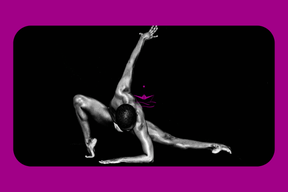Dance and Movement, Same but Different, Why?
We know that dance is as old as human history. In fact, in a scenario where we see movement and dance intertwined, dance; is one of the oldest and most archaic forms of human communication. What distinguishes dance and movement as a concept is; In general, dance appeals to an aesthetic perception and forms, while movement is defined as an action in a more neutral area.
It is not possible today to determine exactly what the boundaries of dance and movement are. Because dance is rather than a discipline that is already highly structured and designed; it is moving towards improvisations to connect with one's own body and perceiving one's body with one's senses and feelings.
Of course, there are still schools that present dance in a clear form specified to its genre; but still it is obvious that it has become widespread to perceive dance as a pure movement and to given up fitting it into certain patterns.
So, is it really possible not to get emotionally triggered while dancing, for something inside us not to start moving?
Movement is all kinds of actions we perform in our daily routines: walking, cleaning, reaching to the shelves, turning left and right in bed. These are all daily actions. Sport is also a movement, it requires certain movement forms according to its type, it gives sequences, alignments and numbers. In other words, sports shapes the movement and allows us to determine the function of the movement through series and training for a specific purpose.
What is this “beyond”? Answering with a rational mind will probably be inadequate. We can think of dance as a “state of being” rather than a series of movements. This process can work in two ways. Movements are born by serving a becoming, or sometimes the movements we take turn into a becoming. It is not known which started which, and we cannot know the beginning and end of such a dialogue; Just as we cannot fully perceive at what point the universe exists, we cannot perceive the answer to this question either.
Dance is often accompanied by a rhythm, a music. Of course, every movement has its own rhythm. The most subtle detail that distinguishes the rhythm of the dance here is; It is the integration of these rhythms with emotions. In other words, even if we do not name it in the dance, the state of being immersed in emotional oscillations and undefined feelings is experienced abundantly. Dance often does this by collaborating with music. It becomes easier to understand the inseparable love of music and dance once you surrender to the music and find yourself doing dance moves you would never have guessed.
Of course, one can dance without music, one listens to one's own music, follows one's own rhythm, and creates one's own rhythm with one's body.
Or it can be a dance without emotion, there may not necessarily be an emotional impulse to dance. So, is it really possible not to get triggered emotionally while dancing, and for something inside us not to start moving? Not really…
Here we encounter the importance of our internal motivation while performing the dance/movement. Let's say I will try to stand on my hands (handstand). I don't actually do this for an emotional purpose, I do purely physical work. However, as a result of repeating this movement, my being will of course start to produce feelings or emotions by receiving signals from my body. Feeling stronger due to being able to carry yourself, feeling more balanced, etc. This is a movement. In order for this to turn into dance, we need to get caught up in that movement, create a rhythm, or play games with our own internal aesthetic tendencies within the movement.
We may start dancing without any emotional purpose, but sooner or later it will cause emotional responses somewhere within us. So, is this the case in every dance experience? Of course not. This varies both due to our individual nature and is related to the priority of the person who holds conscious space for us to experience dance. Whoever presents the dance/movement to us and holds conscious space for it, his/her internal movement motivation definitely affects our experience. One is not better or worse than the other, we can choose what kind of practice we will follow by determining our values and priorities in this life.
No matter what, movement is a necessary process for the human organism and for any living creature. Whether we want it or not, we are subjected to action by life. Of course, if we act willingly; From the combination of this desire and action we receive gifts that facilitate and possibly enhance our humanity.
When we add music, our internal rhythm, sensory and emotional bonds, harmony, and our own aesthetic or trans-aesthetic perceptions to this movement process, we begin to engage with dance.
Dance is such a broad field that it is impossible to say this is right or wrong.
Your body can only know this during and after the experience.
Sometimes you may feel like one of your movements wants to turn into dance; Your body wants to heal by releasing a rhythm, if you step out of the way at that moment; you will see,
you are the dance…


